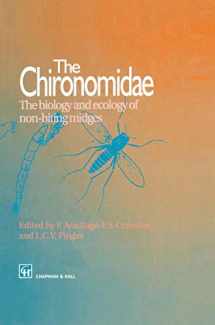
The Chironomidae: Biology and ecology of non-biting midges (Series; 16)
Book details
Summary
Description
The dipteran family Chironomidae is the most widely distributed and frequently the most abundant group of insects in freshwater, with rep resentatives in both terrestrial and marine environments. A very wide range of gradients of temperature, pH, oxygen concentration, salinity, current velocity, depth, productivity, altitude and latitude have been exploited, by at least some chironomid species, and in grossly polluted environments chironomids may be the only insects present. The ability to exist in such a wide range of conditions has been achieved largely by behavioural and physiological adaptations with relatively slight morphological changes. It has been estimated that the number of species world-wide may be as high as 15000. This high species diversity has been attributed to the antiquity of the family, relatively low vagility leading to isolation, and evolutionary plasticity. In many aquatic ecosystems the number of chironomid species present may account for at least 50% of the total macroinvertebrate species recorded. This species richness, wide distribution and tolerance to adverse conditions has meant that the group is frequently recorded in ecological studies but taxonomic difficulties have in the past prevented non-specialist identification beyond family or subfamily level. Recent works, including genetic studies, have meant that the family is receiving much more attention globally.


We would LOVE it if you could help us and other readers by reviewing the book
Book review



